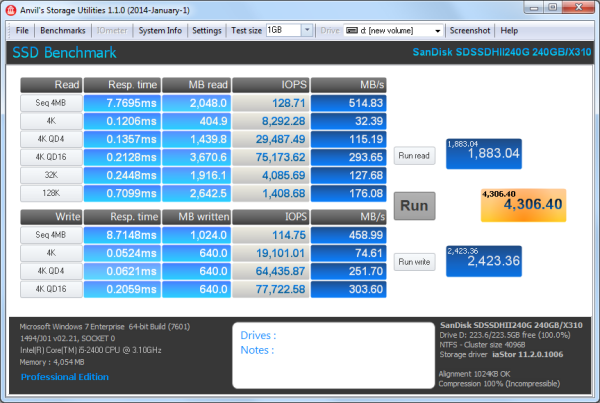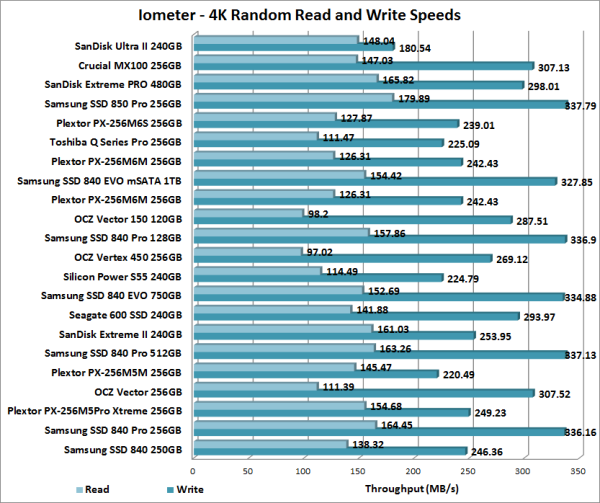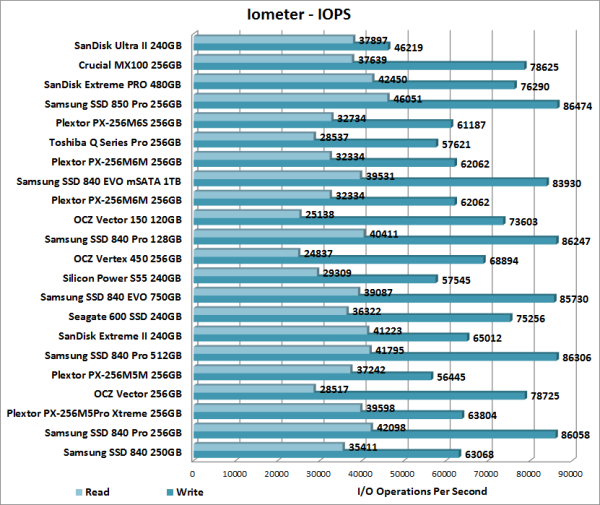Anvil's Storage Utilities:
Anvil's Storage Utilities is another new benchmark designed with SSDs in mind. The standard storage benchmark measures a drive's performance by testing its transfer speeds, access times and IOPS.

Iometer:
Lastly, I ran a series of tests using Iometer. This tool can be configured to benchmark a number of things. In this case, I used it to measure the Ultra II's read and write speeds and the number of operations per second. The tests were run using random bytes and a queue depth of 3.

The Ultra II's performance was hit and miss when tested with Iometer. While the drive was able to read at a respectable 531.93 MB/s, its seqential write speed averaged out at only 212.97 MB/s.
From what I can gather, the Ultra II's lackluster write performance is due to the 8GB test file we're using. With a test file this size, the SLC portion of the drive quickly fills and nCache transitions over to the TLC NAND. At this point, the writing speed drops to what you see above. To test this theory, I reran the benchmark using a 4GB test file. The Ultra II performed better this time around. It started writing at about 500 MB/s but, after a minute or so, the SLC portion began to fill up and the average writing speed dropped to about 335 MB/s.

The Ultra II's random read and write performance was a mixed mag. While the drive was able to read at a respectable 148.04 MB/s, its random write speed topped out at only 180.54 MB/s. The Ultra II's random write speed was a little better when tested using a smaller 4GB file. However, with a random write speed of 204 MB/s, it was still slower than many of the other drives.

According to SanDisk, the 240GB Ultra II is capable of 91,000 IOPS when reading and 83,000 IOPS when writing 4K blocks. In our tests, the drive reached 37,897 random read IOPS and 46,219 random write IOPS. Increasing the queue depth had little impact on the Ultra II's random write performance. However, with the queue depth set to 32, the drive was able to reach 84,191 random read IOPS.

